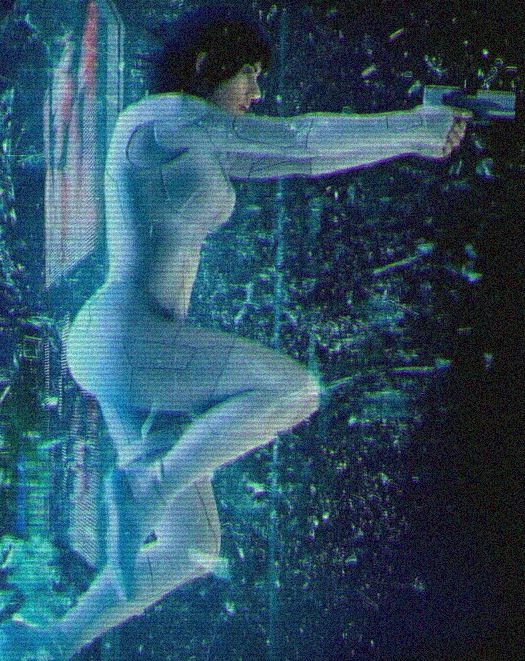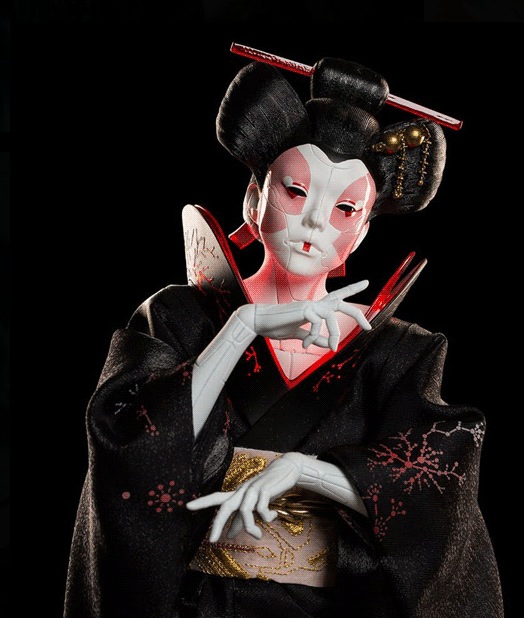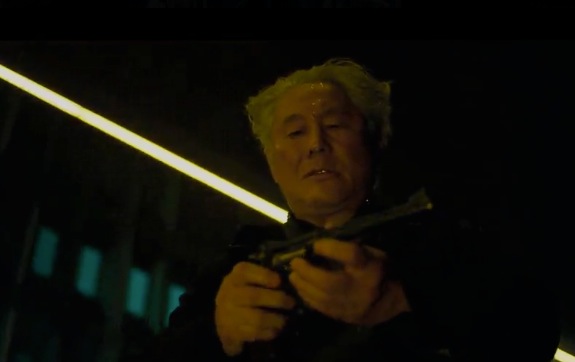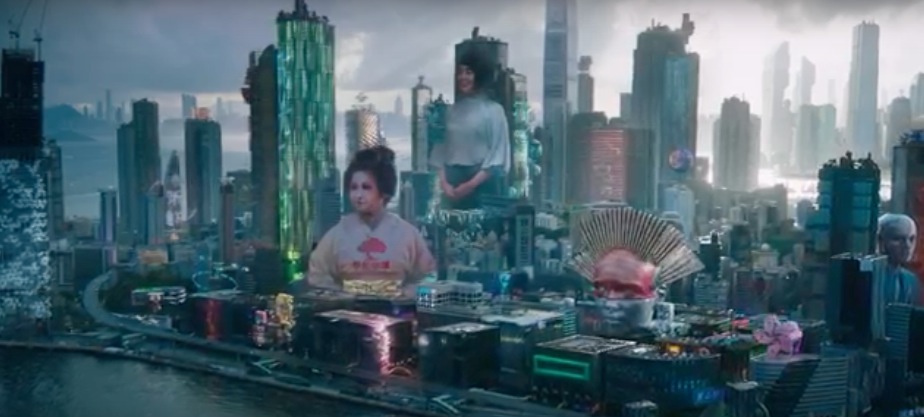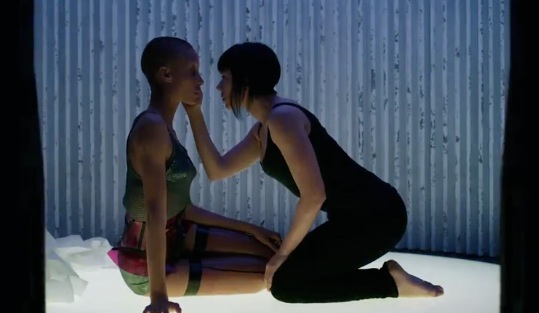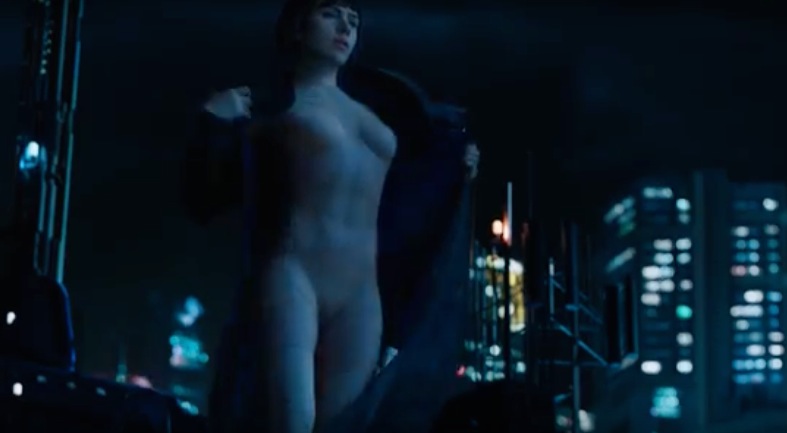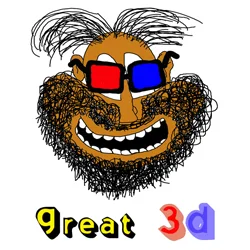Ghost in the Shell (2017)
Ghost in the Shell (2017) 3D Movie Review
First Movie Review Written By: Adolph Vega
Second Opinion and 3D Section Written by : Christin Richard
3D
While 3D effects didn't add very much to the storyline, it became obvious throughout this latestincarnation of Ghost in the Shell that it was a film best enjoyed in 3D format; the animators and effects crew had undoubtedly spent much effort in making the 3D unique and memorable. That said, the 3D was especially busy during certain scenes, such as the panning cityscapes, which seemed to trick the eye into trying to see the complete visuals that were occasionally faster than the human eye could comfortably perceive.
I was most impressed with the 3D effects for the sets with actors and robots, which looked genuine and completely dimensional, rather than cardboard cut-outs moving across layers of background as I've seen in other 3D film productions. There were the occasional pop outs of exploding debris to catch the audience off guard, but these were tastefully done and never overused.
In the end, I felt that the 3D offerings of Ghost in the Shell were an impressive way of bringing this 28-year franchise up to date, and were easily some of the best 3D visuals that I have seen .
Final Verdict: GREAT 3D,
Editors Choice Award
Movie
I have never seen the original Ghost in the Shell movie or anime TV Show. I wanted to state this fact before I start this review. This movie takes place in the distant future where cybernetic implants to the human body are now normal. The character of Major is one of these cybernetic people and she is the main focus of this movie. Major portrayed by Scarlett Johansson works with an elite team of crime fighters. The movie follows Major on her journey of self-discovery and understanding her true nature. I have several problems with this movie and it really begins with the lack of proper set up but also includes many issues with the setting, characters and even the story itself.
The movie begins with two small blocks of text on screen that only gives the audience a limited amount of information. This is a poor way to set up the story and breaks a big narrative rule, which is show me the story don’t tell me the story. This is lazy filmmaking to tell me what is happening instead of showing me what has happened. The movie does a pathetic job of introducing the characters and I never really get to know any of them . The character of Aramali in particular is odd because he only speaks in Japanese. This slows down the movie to show subtitles, which becomes awkward for only one character to speak a different language from the rest of the cast yet they understand him and he understands English when it’s spoken to him. Subtitles in movies don't bother me , but at least make them consistent and not limited to only one character in specific scenes. It's a very odd choice that I found it jarring. This nitpick might not be a big deal to some people but it really bothered me . The lack of introduction and proper set up for this story makes it difficult for me to care.
I suppose this movie is set in Japan, but it doesn't seem authentic to that location. This futuristic setting looks gorgeous but it's also overdone. The visuals are a distraction and feel tacked on for the sake of being flashy. I never been to Japan but from what I know of the country the setting just doesn't seem right. I just couldn’t suspend my disbelief and accept this futuristic world. The cast feels alien and not truly representative of a Japanese culture. I don’t really care what race or ethnicity actors are as long as they fit the setting and do a fine job in their perspective roles, sadly for this movie it was neither. Having a western cast just feels out of place for this movie. Japan is not known for having a diverse population so it just seems out of place to have such a diverse cast in a movie set in Japan. The filmmakers are trying to have it both ways and cater to the Japanese origin of this story and include a western cast to pander to American audiences , but it just doesn't work. If you want to westernize the movie than set it in the west . If the movie was set in New York City than it can justify such a diverse cast . I am fine with movies establishing new versions of established characters and including more cast diversity where it wasn't present before , but the filmmakers have to sell the changes and make it work on screen . In the 2016 Suicide Squad movie they changed the race of the character of Deadshot , to justify the inclusion of Will Smith. In the DC comics he is a white man and of course Will Smith is an American American. This didn't bother me because I really enjoyed Will Smith's performance and he made that character his own and it fit that story . Regarding this movie I simply wasn't sold onto these characters or the setting . Major the main star of this movie looks bored and apathetic for the entire movie. I suppose this robotic acting was intentional, but I really hated her performance on screen. Major is an interesting concept for a character, but is not an interesting character to watch on screen in this movie . Overall the acting within this movie is bland and uninspired. I couldn’t connect to anyone, and I didn’t like any member of this cast.
The story suffers because I don't like characters, and I don't believe the authenticity of the setting but most importantly the movie suffers because it doesn't have a soul. The movie discusses some of the interesting aspects of cybernetic implants and humanity, but it doesn't try to get into psychological or sociological elements that are key themes to the overall story. Movies don't need to dive into deeper elements to be enjoyable, but this movie goes out of its way to mention its title "ghost in the shell " several times and it never explains what that means. I don't mind when the movie mentioned it's title the first time, but it kept doing it repeatedly again and it becomes tedious and annoying for the tittle to be said but not explained . What does it mean to be a "ghost in a Shell" ? If the human brain and consciousness can be transported into a machine , what happens to the soul of the individual? Does the human soul actually exist or is it just an abstract construct to explain our personality traits ? The filmmakers are trying to have it both ways again and mention deeper story elements, but not actually discussing them. Does Major need to eat and drink even though her body is cybernetic? Even basic biological functions such as eating and drinking are important aspects to being a human being and being alive in this world. Ultimately it doesn't matter if Major has this capacity to eat and or drink, but this could have been a simple yet effective way to literally and figuratively digest deeper elements to what it is like to be a cybernetic human . The movie seems more interested in fun colorful action scenes than fully developing its characters or storyline . The movie is completely devoid of any substance, and only pretends to have a soul. Ironically the title is perfectly fitting , this movie is a ghost of a great story contained within a shell of a terrible movie . Maybe this deeper elements that I desire are glossed over within this movie and it is better developed in the TV Show? I don't know , but the movie just feels lacking and is an obvious omission within this screenplay . Many aspects of the story are just glossed over and are not given enough screen time to give real depth to this movie and its characters . One example is with a small scene with an older woman who has tea with Major. This scene falls totally flat and lacks any kind of emotional resonance, because it's so rushed and is poorly scripted. They tried and failed to give this movie a soul with this scene. I don't understand other elements of this story because they are not properly explained, so many times I felt lost within this movie. What are Majors limitations to her cybernetic body? Can any human body part be cyberneticly fixed and upgraded? What if any regulations exist in this world for cybernetic implants? Maybe these questions are answered in early drafts of the the script and were edited out of this movie to keep a shorter runtime or make it more "mainstream" but I definitely feel like there is more to this story that isn't shown or talked about on screen. Obviously condensing a animated series to a feature length film some elements can't be fully explained but I really feel like I am missing out on many key elements of the story, and the most important of which is having any kind of depth.
Ultimately this movie did the biggest cinematic sin for me and it was boring. The few action scenes are somewhat entertaining, but that is not enough to carry this movie. Ultimately this movie is forgettable outside of its beautiful visuals. I simply don't care about the story or characters and found it hard to get into the movie. I sort of felt like this was the third episode in a long-standing movie series and I missed out on the previous two movies. I wanted to like this movie, but sadly It doesn't deliver the satisfying theatrical experience that this story deserves. Ghost in the Shell 2017 is all visuals with only the illusion of substance and is a massive failure of a movie .
Final Verdict: 3/10
I was first introduced to Ghost in the Shell during an animation renaissance of the mid 1990's. Japanese anime was a rare treat in theaters, and a North Dallas cinema was showing Ghost in the Shell (1995) on one screen, for one night only. The show was sold out , and as we rushed to our seats before the opening scenes, we had no idea what a treat that we were in for. Ghost in the Shell (1995) was an animated film that took chances much in the same spirit as Akira (1988), and broke new ground with American audiences with its level of complexity and maturity.
Ghost in the Shell had been a manga publication for several years leading to its full length animated debut, and the Japanese language with English subtitles let viewers know that the production was unapologetically foreign and authentic. No English dubbed dialogue - just an excellent storyline and quick action that caused movie goers that night to completely forget that the film was entirely animated fantasy. In that moment, it seemed as real as any movie that I had ever enjoyed; I was captivated.
Fast forward to 2017. My only exposure to the franchise outside of the 1995 anime were Stand Alone Complex (2003-2004) and its second season S.A.C. 2nd GIG (2004-2005). I had only enjoyed these installments on Adult Swim via the Cartoon Network, so I was excited to see the genre making a reprise in cinema, much as it had twenty-two years ago. The aforementioned titles had been released a long time ago, and I was ready to allow this installment to stand up on its own, with even more and greater things!
Ghost in the Shell is a story about cybernetic technology in the future, whereby genetic modification and human enhancement is as commonplace as today's smartphone. It's a story about the condition of humanity in a world of technological advancement, which blurs the distinction between human and machine.
A young woman, Mira Killian, wakes from an advanced surgical operation, whereby her brain has been carefully transplanted into the body of a beautiful, humanoid robot. After much training and becoming accustomed to her new, powerful body, Major Mira Killian becomes an invaluable member of a special forces operative for the Hanka Corporation that saved her.
Throughout this 2017 incarnation of Ghost in the Shell, I sensed much influence from other sci-fi directors and films, namely Ridley Scott's Bladerunner (1982) in cinematic style and ambiance, and perhaps even a splash of Lana and Lilly Wachowski's Matrix (1999) for its slow motion action within a technological world where nothing is as certain or final as it seems. Maybe if the production had simply allowed one of these directors to have led the screenplay, it would have been a more complete and dynamic release.
That said, director Rupert Sanders correctly assumes that the majority of his viewing audience will have had no previous exposure to the original story, and the first half of the film revisits those underlying themes with some creative liberties that don't stray too far from the original movie and series. But by the second half of the film, just as the action was beginning to suck the audience back into full attention, it dawned on me that everything seemed a bit muted for an anime remake.
Certainly there are scenes in anime production that wouldn't be received as well in live action with physical performers, but it appeared as though the producers were trying to cast a very wide net, as to be a little something for every curious movie goer, all the while sealing the movie's fate as being bland and unremarkable.
A movie as this is likely never going to be an instant blockbuster; the audience is unique and curious when attending a movie of this genre, so it's important to leave them with something that will become a slow and boiling cult classic that will reprise and age well. 1982's Bladerunner itself was a theater release flop that returned to greatness once audiences had a chance for a second look at the cinematic masterpiece.
Make no mistake, the movie did entertain me. The 3D visuals really came to life during Major's dangerous “deep dive” into a Geisha robot whose mind was riddled with viruses by hackers, but contained information invaluable to the protection of Hanka Corporation's interest. When Major was attacked by an uncountable number of these viruses, the depth, scale and emotion of this scene became my favorite in the film, not only for its cinematography, but because of the uncertainty of its conclusion.
My chief complaint with the film was that some of the dramatic conclusions and brutality of the screenplay occurred off screen, as though audiences either were imaginative enough to fill in the level of onslaught that were about to occur, or that their young minds weren't mature enough to be able to watch any violence outside of that which might occur within any modern video game title.
In this, I assert that Ghost in the Shell (2017) didn't go far enough with violence, sensuality and respect for its original creators and audience demographic. It started with a PG-13 rating, which tells audiences that this is a movie for young people that won't take any real chances with the production. A better release would have been a solid R-rated film that could have gone much deeper in affecting the minds of movie goers.
Since this recent release of Ghost in the Shell, there has been much discussion about whitewashing and its being the basis of the movie's box office failure, but a good film can often steer around such criticisms when it's well presented and shocking to viewers and critics alike. I suggest that Scarlett Johansson placed within the starring role of this movie demonstrates that it was made for American audiences and producers looking for a name to sell tickets.
But Johansson's failure in this movie had little to do with her nationality or her neutral acting technique that bordered on that of Keanu Reeves, and more to do with the fact that the director and producers tried to be too much to too wide of an audience without considering the glory that was theirs for the taking - if only a few chances and creativity were thrown into the screenplay.
Johansson's inclusion in this film places her within an uncertain realm of making poor movies in between her filming with Marvel Studios. I think that it's been all of three years since Lucy was released in theaters, and even Morgan Freeman couldn't save that flimsy plot within a cliché film. This film seemed to be an aesthetic fit for Johansson. In costume, she did look very much like the original Motoko Kusanagi in the animated releases.
Overall, whitewashing had little to do with my disappointment in this movie. It was just a summer flick that was improperly timed, that was entertaining but underwhelming. It could have been a great film, even with its racially mixed cast. By far, the best part of this movie was within the only new and interesting ground that it mustered the courage to manifest – its 3D effects. Unfortunately, special effects cannot make a good film – it can only enhance it. Hopefully, it won't take another twenty-years for new producers and directors to make this live action genre into the kind of film that it could have been today.
My Score: 6/10
©2017 PARAMOUNT PICTURES.
ALL RIGHTS RESERVED.

